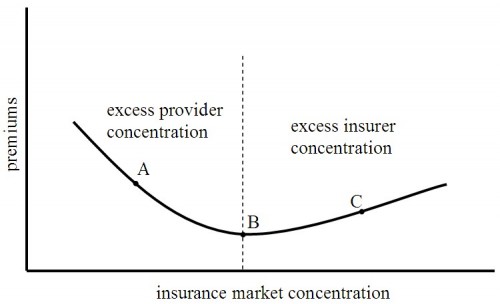I’ve wondered what the role of non-profit hospitals will be once nearly all Americans have health insurance. The problem of uncompensated care will largely go away. Will the non-profits retain their tax-preferred status? One way they might not is via merger with a for-profit hospital. Jenny Gold of Kaiser Health News reports that some hospitals are considering doing just that.
[H]ospital mergers and acquisitions tend to go in boom-and-bust cycles. “My guess is that this is entering a period of expansion again,” says Gerard Anderson, director of the Johns Hopkins Center for Hospital Finance and Management.
One big reason is that the new health overhaul law will eventually extend coverage to an additional 32 million people, reducing the financial burden of the DMC and other hospitals that treat a lot of uninsured patients. “Health reform gets rid of a big chunk of the uncompensated care problem,” making urban hospitals more attractive acquisition targets, says Jack Wheeler, a professor of health management and policy at the University of Michigan.
Hospitals are merging while the political focus is on increasing competition in the insurance market. If market power swings (further) in favor of hospitals, there’s really very little reason to be optimistic about a market-based solution to reducing health care costs on the private side. The only element of the new health reform law that might help is the Cadillac tax. That doesn’t kick in until 2018 and won’t have a substantial effect for at least a decade after that. I don’t think the American public is going to be satisfied with the rate of premium growth over the next two decades.
I’ll just throw in the relevant figure again (below). Moving in the direction of “A” is probably more costly than in the direction of “C” because most health care premium dollars (~85%) collected by insurers flow to providers. (In math speak: the slope between “A” and “B” is larger in magnitude than between “B” and “C”.) Thus, all other things being equal, increasing market concentration among providers leads to a higher absolute markup in prices (premiums).

By the way, this figure isn’t just based on my own imagining. I’ve shown it to many health economists and all agree it has the right shape. Also, I’ve roughed out some theory that reproduces it algebraically. I’m confident in saying that the health care market really has the qualitative characteristics the figure suggests.


